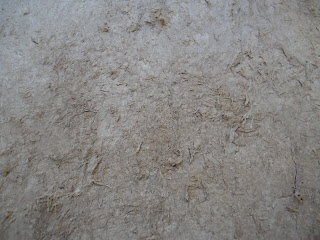After the success of the living windows for St Crispin's Day in October, we are doing it again next week. From Wednesday 7th till Friday the 9th one or other of us will be in the shop window on Vigo St along with a selection of elves (unfortunately not the sort who will make the shoes for us at night, although I am ever hopeful).
Finished a particularly interesting boot this week. Sometimes you get a commission which you think, hmmm, not sure how this is going to turn out, but that when it is finished, you absolutely fall in love with. Well, this is one of them.
Chocolate brown lizard skin with natural whip snake slip beading (piping). Square waist, 3/8" sole, 5" high, natural finish throughout. We split the vamp because it is hard to find a skin large enough to make a whole vamp and it means it does not need blocking (can you block lizard?) I like the proportions and the lines, but most of all I like that lizard skin. It's beautiful. I wouldn't mind a pair...
 |
| Elegant Profile |
 |
| Check Out That Slip Beading |
 |
| Our Signature carréducker Crow's Foot Stay Stitch |
 |
| Chisel Toe And Natural Stitching |
 |
| Wing Cap And Split Vamp |
And so to shoemaking. We get asked about what leather we use for what bits of the shoes. So here is a little information about insoles. Insoles are the foundation of a strong hand welted shoe. If the insole gives out, the shoe is unwearable and will fall apart.
We use insole shoulders from Bakers of Colyton, Devon, England. This is the shoulder area of an adult cow, across the shoulder from top of leg to top of leg, without the neck. As you can see, they are huge and it is staggering how much surface area a cow hide covers.
Bakers are the last tanners in England who use the traditional oak bark method. Oak bark is full of tannin (which is the stuff in tea which makes it dark). Hence tanning, which is the process of preserving the hide. It involves many stages of scraping and soaking in different pits in the ground and different tanning solutions. The leather comes out at the end preserved and durable, but still supple and breathable with its protein structure intact which allows us shoemakers to do our work. Under the right conditions, leather tanned like this can last for centuries.
Other advantages of using leather tanned like this is that it is kind to the skin; breathable; absorbs sweat; dries out well; has a natural water resistance; is abrasion resistant; and is very long lasting when in contact with the ground.
Bakers use a very traditional method which takes up to 12 months to carry out. The processes are sustainable and relatively green, as the oak bark is from renewable sources.
We love their leathers (which are of the highest quality) and like to support brands made in England.
Another reputable high quality tanner of oak bark cow hides is Rendenbach from Germany which has a larger production and is more widely available.
The insole shoulders have a natural grain to them and it is important to cut your insoles along the grain not across it. This will help your shoes last longer.
We use two weights of insole. For standard gent's shoes and for boots, we use 7-9 iron shoulders (no idea what an iron is) like the picture below
For lighter weight gent's shoes and ladies work, we use 5-7 iron insole shoulders. These are lighter and more flexible. It does make cutting the holdfast/feather more difficult though.
We buy our insole shoulders roughed which means the skin side has been roughed up taking off the top surface layer. If you buy them intact, you have to glass the surface before you start, so it saves us a job. This prevents the insoles cracking and squeaking.
The flesh side can be dense and compact or slightly fluffy like this one. we always skive off the fluffy stuff once we have welted the shoes because this helps prevent squeaking too.
So that is about all I can tell you about insole shoulders. Hope it was interesting and useful.
Until next week, happy shoemaking!




